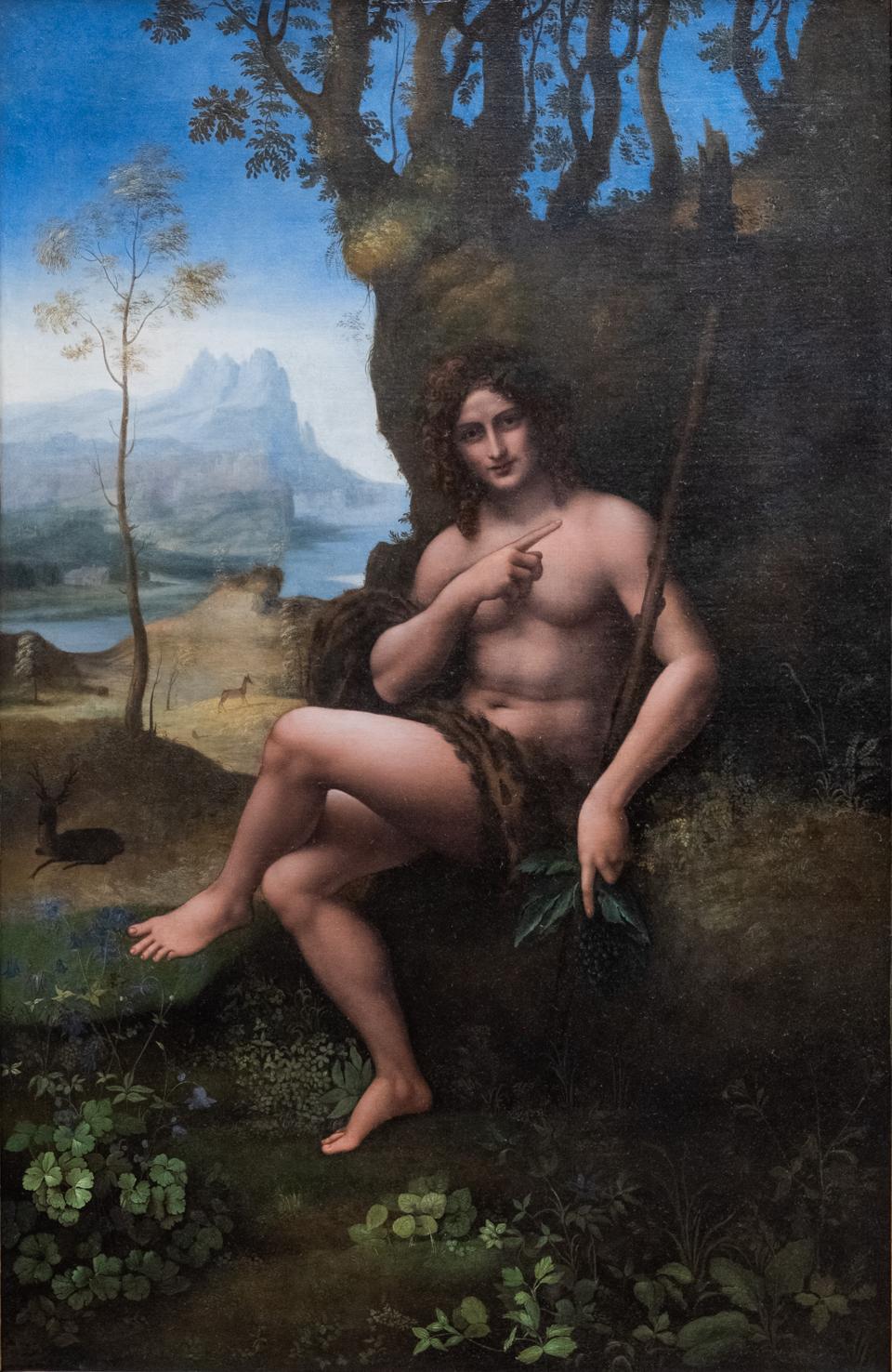Bacchus or Saint John the Baptist

The painting Bacchus or Saint John the Baptist is a remarkable work of art displayed at the Louvre, one of the most famous museums in the world. This painting, by an unknown artist, is a striking depiction of two iconic figures from mythology and religion.
The painting measures approximately 2 meters high by 1.5 meters wide, and is painted in oil on canvas. It is framed in a gold frame which adds a touch of elegance to the entire work. The artist used bright, contrasting colors to bring the characters to life and create a dynamic atmosphere.
In the center of the painting we can see Bacchus, the Roman god of wine and celebration. He is depicted as an attractive young man, naked and crowned with vine leaves. Bacchus holds a cup of wine in his right hand and a bunch of grapes in his left hand. His gaze is turned towards the viewer, thus inviting them to participate in the celebration of life and pleasures.
Next to Bacchus is Saint John the Baptist, the biblical prophet and forerunner of Jesus Christ. He is depicted as a bearded man, dressed in camel skin and holding a wooden staff. Her gaze is directed towards the sky, symbolizing her spiritual connection with God. The presence of Saint John the Baptist alongside Bacchus creates an interesting contrast between spirituality and sensuality.
The background of the painting consists of a lush landscape with vines, trees and hills. This representation of nature reinforces the link between Bacchus and the earth, thus emphasizing his role as god of the vine and agriculture.
The painting Bacchus or Saint John the Baptist is a thought-provoking work that invites viewers to explore themes of mythology, religion and human duality. Its location in the Louvre makes it a must-see piece for art lovers and tourists from around the world.
© ChatGPT 3.5
1. Be sure to take the time to admire the details of this intricate painting, such as the facial expressions of the figures and the textures of the natural elements.
2. Do not hesitate to inquire about the different possible interpretations of this work, as it has been the subject of much discussion among art historians.
3. Take photos, but be sure to follow the museum's rules for non-flash photography.
4. Take advantage of your visit to the Louvre to discover other world-famous masterpieces, such as the Mona Lisa and Venus de Milo.
5. Visit the Louvre website for information on opening hours, prices and temporary exhibitions.